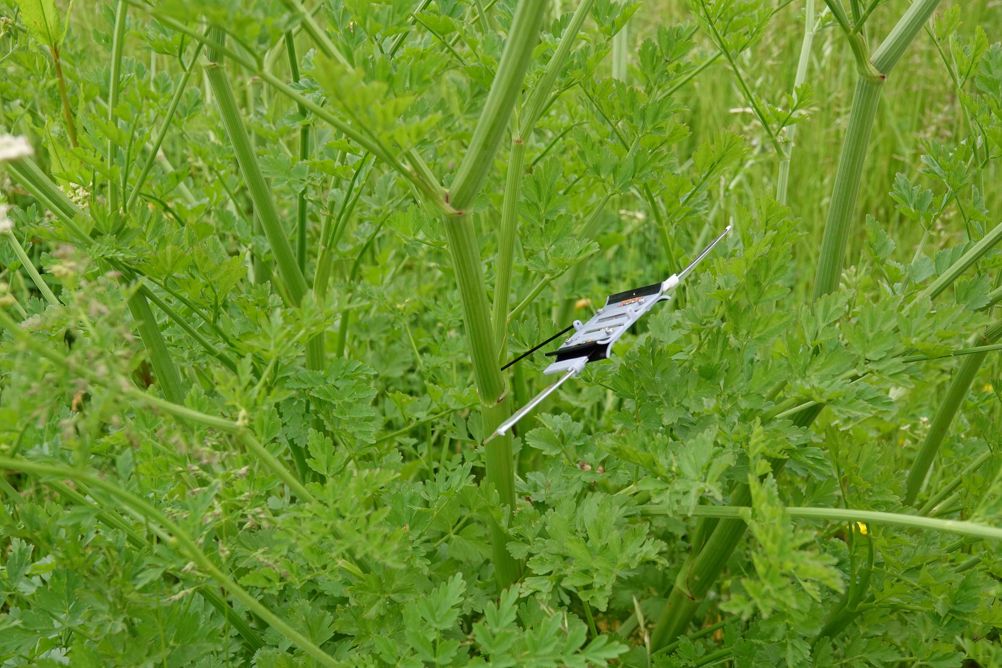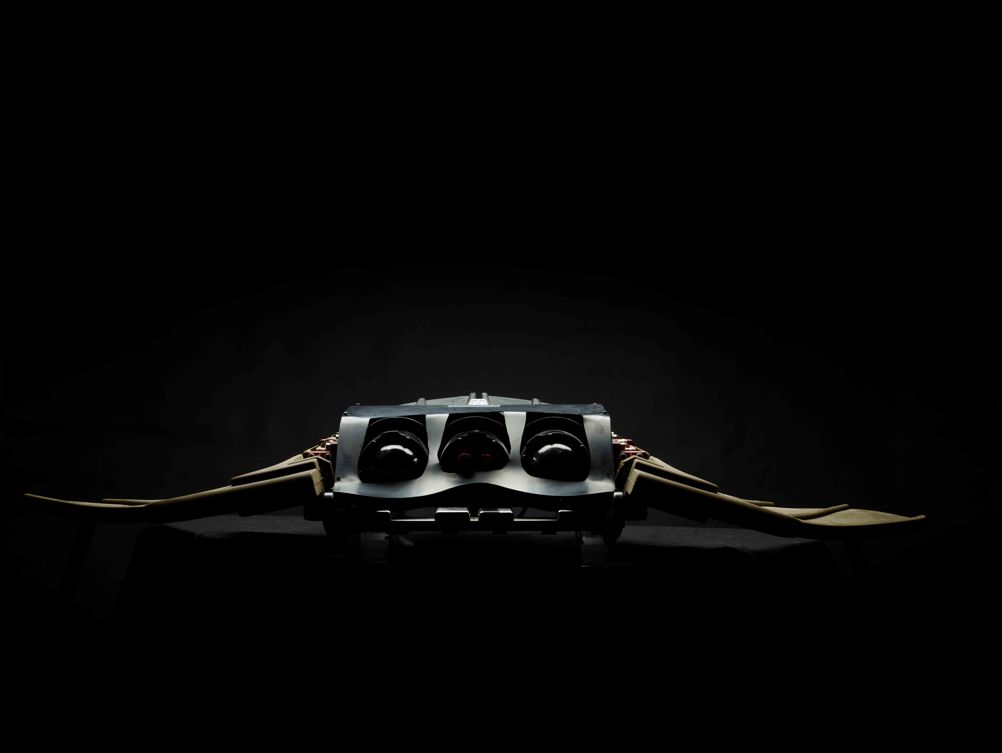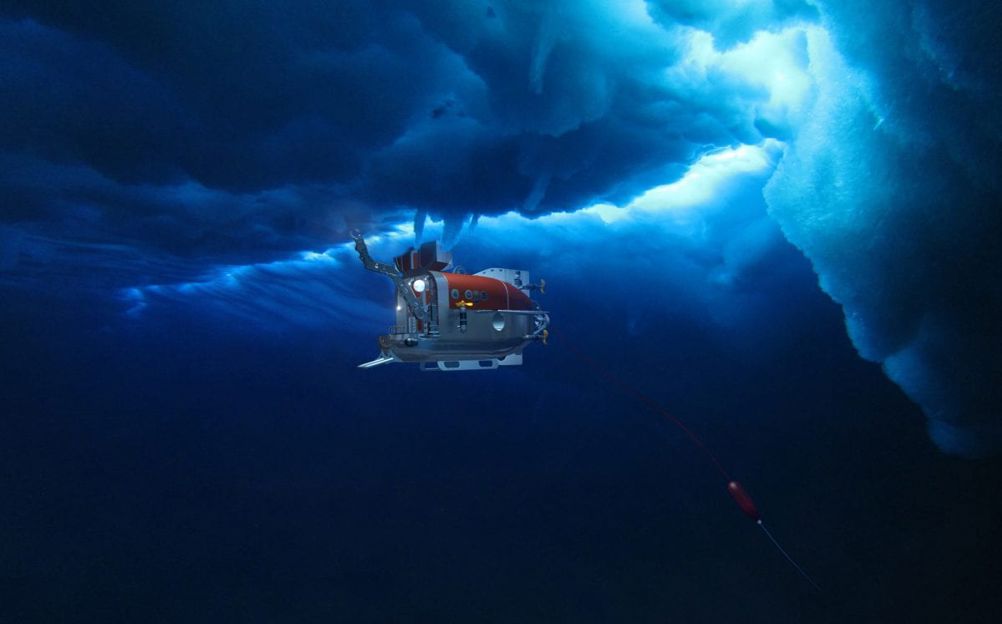As we look to a future in which advanced robotics technologies are ever-more integrated with our everyday lives, the idea that robots might help us protect the planet we live on is a particularly exciting prospect.
While ‘robots saving the Earth’ sounds slightly farfetched, we’re now edging towards a reality in which machines could provide the assistance we need to solve a range of critical environmental challenges: challenges that humans alone aren’t equipped to solve, at the very least without putting ourselves in danger.
One example is in Search and rescue operations. In the face of natural disasters such as earthquakes, hurricanes or wildfires, conditions are not only unpredictable and dangerous for humans but simply inaccessible in many cases. However, a robot of minuscule size, equipped with advanced intelligence technologies, can step up to the task and survey hard-to-access areas.
Many of today’s robotic solutions, whilst having the capability to tackle a range of environmental issues, are simultaneously looking to nature itself to provide inspiration for the qualities they need to do the job.
One compant at the forefront of this trend is Oxford firm Animal Dynamics which is developing a range of intelligent systems and autonomous vehicles such as drones, designed with the simple yet efficient movements of a wide range of living creatures in mind.
“It’s about creating autonomous systems that take people out of harm’s way,” said the company’s head of engineering Melanie D’Mellow, summing up the company’s long-term mission. “Logistics is our primary focus at the moment, because carrying goods over difficult terrain in defence applications or humanitarian applications, maybe disaster relief — in all of those scenarios, you don’t want people trying to drive trucks or fly aircraft. You’d much rather have an uncrewed vehicle doing it.”

Whilst logistics is the current focus, D’Mellow explained that a range of applications are under considerations. On the environmental side, for example, the company’s ‘Stork’ flying robot solution can be used for crop surveying and spraying in agricultural applications, precisely controlling delivery so that pollution is kept to a minimum.
“You’d probably look at it and think it doesn’t look a lot like a stork, but I really want to draw the distinction between bioinspiration and biomimicry,” D’Mellow said of the Stork family of vehicles, described as the company’s main focus of innovation currently.
“We’re very focused on what’s the need and what’s the requirement of the product — and that’s where we start, not ‘we want to copy that animal’.”
The Stork STM is an autonomous heavy-lift powered BVLOS (Beyond Visual Line of Sight) parafoil drone, capable of carrying 135kg over 400km, while the Stork ST-25 is a smaller uncrewed aircraft system suited for last-mile logistics with payload drop, infrastructure monitoring and LiDAR capabilities.
Looking at how birds can carry loads over long distances due to large wing spans, Animal Dynamics aims to use these capabilities as inspiration whilst bringing together all of the other necessary engineering facets such as safety and reliability to create an efficient solution, said D’Mellow.
“Another example is when you look at how birds respond to gusts of wind, they change the size of their wings by tucking their wings in, they have very adaptive surfaces to control their behaviour in the wind … We have a research project at the moment, looking at how we can have adaptive wings and use more of that bird inspiration,” she told The Engineer.
“But when it gets into a product, it doesn’t really look like the bird or the animal that inspired it, it’s in the detail of the product solution … The bio-inspired nugget is hidden under all of those layers of product design, but it’s in there.”
In designing the Stork solutions, making them as eco-friendly as possible has been taken into consideration with one of the benefits being efficiency of the wing and achieving a range of hundreds of kilometres without needing a lot of energy, she noted. The company is also conducting work on sustainable fuel sources, looking at hydrogen fuel cells and potential biofuels.
Elsewhere in the company’s bio-inspired tech range, Animal Dynamics is in proof-of-concept stage with an uncrewed underwater system, ‘Raydrive’. The system uses a flapping propulsion technique, inspired by the gliding motion of manta rays.

“If you look at propellors, they get caught up in weed and lines, they’re quite noisy, quite dangerous to swim alongside,” D’Mellow said. “That was what inspired [us to look at] a flapping wing type underwater vehicle … Rays and flat fish can sit on the bottom of quite muddy, salty, weedy ground and not get tangled, so that’s where the idea came from.”
The prototype showed promising results, D’Mellow added, explaining how the company looked carefully at the design and structure of the wing to enable it to create the slow, flapping manta ray style behaviour.
“We found some good insights into what the mechanism needs to be, how you need to drive the wing, how you manipulate the stiffness and elasticity of the wing in different directions to get that motion.”
Whilst it’s still early days, there are already a number of ideas bubbling around in the company for future applications of thes technologies,
she said.
“We think a lot about what drones could do if they were loitering for long periods of time in the ocean. Maybe sampling the water, maybe travelling all around the ocean recording what’s going on. It’d be brilliant if a swarm of mini manta rays was surveying the ocean and feeding back the data. We’d learn an awful lot.”
Elsewhere in the UK, a team at Bristol University has developed a new drive system for flapping wing autonomous robots, using a new method of electromechanical zipping. Removing the need for conventional motors and gears, the team is hoping to pave the way for a new generation of flying micro robots.
As with Animal Dynamics, the group’s work has involved looking to nature itself by taking inspiration from bees and other flying insects to facilitate next-gen insect-sized robots, able to be deployed in hazardous environments.
The team, led by Bristol’s professor of robotics Jonathan Rossiter, has developed a direct-drive artificial muscle system dubbed LAZA — Liquid-amplified Zipping Actuator — to achieve wing motion.
“Artificial muscles are great because they can replace conventional motors and gear boxes, the kinds of things that you see in a manufacturing robot in an assembly line — those robots are great for building cars, but not so good for human interaction or interaction with the environment,” Rossiter told The Engineer.
“If we can take motors and then turn or replace them with artificial muscles, we end up with a much more effective, natural and biological system.”
The LAZA system works by directly applying liquid-amplified electrostatic forces at the wing root, which eliminates the need for traditional transmission systems.
Dr Tim Helps, developer of the system and lead author of the study paper, explained that using electrical charge to achieve the flapping wing motion has previously resulted in low performance due to the high voltage causing a spark to jump between electrodes and resulting in a loss of some of the force. The team found that by adding a droplet of insulating fluid, the force was amplified by ten times, Helps said.
“Once we had that, we worked on improving the quality of the wings so that we could get forward thrust, having passive pitching and generally improving the performance of the system,” he added.
In demonstrations, the team found that the system could deliver consistent flapping over more than one million cycles, an advance that shows promise in enabling robots to complete long-haul flights. The wings were also found to provide more power compared with insect muscle of the same weight, enough to fly a robot across a room at 18 body lengths per second.
“There’s this advantage of simplicity of the system which means it could be scaled down, and we’ve also done some scaling analysis on the system that says the smaller you make this thing, the more powerful it’s going to be for its own body weight,” said Dr Helps.
Among the challenges faced is the process of optimising the way the wings contract the muscles, and how to design the wings. As Helps pointed out, nature has had millions of years to test these cycles whereas the team has had to carry out this research in a relatively short space of time.
The group’s next steps involve working on taking the structure and making it as small as possible: millimetre-sized, which the team expects to be able to demonstrate by the end of this summer; then ultimately at micrometer scale.
In addition to the power and simplicity advantage of making these robotic structures minuscule, the environmental benefits are clear to the team, which envisions a wide range of applications for insect-sized flying robots. These include wind turbine inspection, decommissioning nuclear power stations, or even pollinating plants as a welcome helping hand to our dwindling bee population.
“Currently, inspecting wind turbines is a very expensive and wasteful thing to do,” said Helps. “Our vision here is that you’d have a swarm of these robots, they fly out to the wind turbines, and they can use non-destructive techniques such as measuring vibrations to check on the health of the turbines.”
Exploring biodegradable materials to ensure the robots can degrade harmlessly into the environment is also a big focus for the team, Rossiter explained — so that if robots fail or are lost in the field, they will be naturally absorbed without causing unnecessary harm.
For the insulating fluid, described by Helps as the ‘special sauce’ of the actuator, the team have used silicon oil but have experimented with a variety of common biodegradable cooking oils such as vegetable and sunflower oil.
“I think [the exciting thing] for me is the simplicity of this,” concluded Rossiter. “We could come up with a really complex solution, very difficult to scale up or down, but Tim’s flapping wings are very simple.
“Nature does things simply because it’s the lowest effort, and most optimal way, and this, we hope, is the lowest effort most optimal way. Nature is really good at that, and that’s the key.”
Whilst Bristol’s flying insect-bots could tackle various environmental monitoring tasks on land, further afield researchers in the US are using a submersible robotic solution to undertake one particular underwater monitoring challenge: exploring the glaciers of Greenland.
The remotely operated vehicle, ‘Nereid Under Ice’ (NUI) was developed by engineers at Woods Hole Oceanographic Institution (WHOI) in Massachusetts. Now, a mission led by a team at the University of Texas at Austin will see the NUI robot gather samples from three Greenland glaciers: Kangilliup Sermia, Umiammakku Sermiat and Kangerlussuup Sermia.

Greenland’s glaciers make up the world’s second largest ice sheet. They are thought to be naturally stabilised by sand walls (moraines) from which the robot will gather and return sediment samples. The data revealed by the samples, retrieved by the robot’s manipulator arm, is hoped to lead to more accurate model projections for future sea level rise.
NUI will map seafloor topography as it travels, navigating challenging conditions and obstacles such as icebergs and riptides.
“We know that topography under glaciers and ice sheets exert first-order control on ice motion, but topography can change over time as glaciers erode bedrock and deposit sediments at their termini — glaciers are excellent at eroding,” said mission leader professor Ginny Catania, from University of Texas’ Jackson School of Geosciences.
“Our study will measure the rates of deposition at glacier termini in situ for the first time. We will also get at the processes that contribute to deposition so that we can build an equation for deposition linked to ice flow that can be used in ice sheet models.”
When operating autonomously, senior WHOI engineer and project co-lead Mike Jakuba explained that the vehicle will use upward and downward looking ranging sonars to fly at a safe distance from the seafloor and ice overhead.
“That strategy alone would not allow for close inspection or activities like sampling that require landing on the seafloor,” he said. “For those missions, NUI’s tether will let operators pilot the vehicle directly. Pilots will rely on a combination of imaging and ranging sonars and cameras to visualise the environment around the vehicle.”
The ROV technologies of tethering, piloting, video and manipulation will combine with AUV technologies such as batteries, autonomous operation and acoustic communications to provide unique capabilities, Jakuba added, brought together by NUI’s tether.
“NUI is connected to operators on board a host vessel by a 40km long hair-thin (250um) bare fiber optic cable. That tether allows NUI to operate up to about 10km away from the host vessel while still under the direct control of pilots.”
NUI was built with the risky environment in mind — Jakuba highlighted that whilst in open water, a robot suffering a critical fault could generally just float to the surface to be serviced, but this strategy wouldn’t be viable in this project because of potential overlying ice and safety concerns preventing the vessel from approaching the glacier for rescue.
“Critical systems like batteries and propulsion are designed to be redundant and resistant to the failure of individual units,” he said.
“With respect to the tether, the vehicle is designed to accommodate a sudden loss of communications with its operators. In case of communications loss, NUI will switch to autonomous operation and await instructions from operators that we can send acoustically. In fact, it is even possible for the vehicle to continue a dive, for example by switching from sampling to mapping.”
With the ‘push-core’ samples from the moraines gathered, scientists can directly study sedimentary grain size, which Jakuba described as critical to understanding the depositional processes that build moraines.
Whether taking a leaf out of nature’s book in their design or simply assessing environmental challenges the Earth faces and filling in the gaps to help humans combat them, it’s clear that robotic technologies are set to be an increasing presence in our lives.
We’re yet to see the full potential of many innovations for environmental applications, but as climate threats loom, we could surely benefit from a helping hand.





Nanogenerator consumes CO2 to generate electricity
Nice to see my my views being backed up by no less a figure than Sabine Hossenfelder https://youtu.be/QoJzs4fA4fo